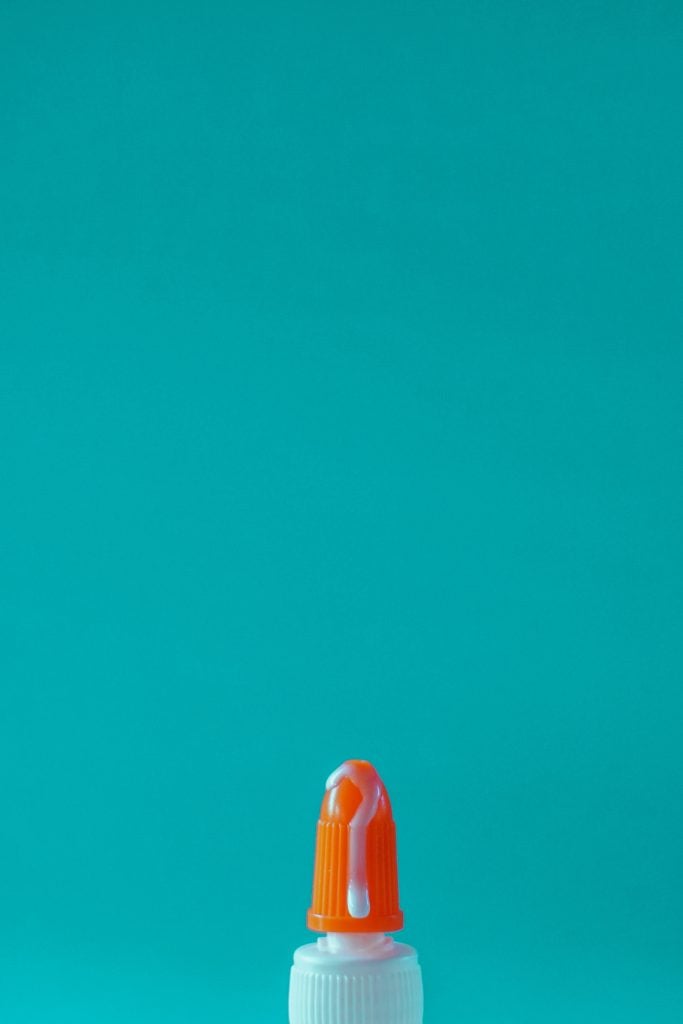
Premature ejaculation (PE) is the number one sexual difficulty that affects males. In fact, about 1 in 3 males ages 18-59 in the United States have problems with premature ejaculation.1 This issue can be the source of stress, anxiety, and relationship conflict for many males and their partners. However, there are effective strategies available to alleviate this problem. This article explores potential causes for premature ejaculation and coping techniques that can help males who suffer from this common condition.
What is Premature Ejaculation?

There are several definitions offered to define the exact criteria which constitute premature ejaculation. In general, it is defined simply as ejaculation that occurs before the male wants it to. This can happen during masturbation or during partnered sexual activity such as oral sex or coitus.2 The disorder is also characterized by negative psychological effects on the male or his partner. These can include decreased confidence in the relationship, interpersonal difficulty, mental distress, anxiety, embarrassment, or depression.3
The psychological consequences are one of the most relevant aspects of PE, since all males have different perceptions of how long they should be able to last during a sexual encounter before ejaculating. Some males believe they should be able to last for extensive periods of time, when in reality, the average male is only able to contain his orgasm for about five minutes during coitus.2 Therefore, any length of time before ejaculation is not necessarily considered “premature” unless it causes distress to the individual ejaculating. Many males also worry that their rapid ejaculation will cause their partner to be angry or less satisfied with the sexual encounter. However, a study of 152 males found that PE causes more distress to the male experiencing it than to his partner.3 Therefore, the primary goal of treating PE should not be for the male to be able to last a certain amount of time before ejaculating, but for him to reach a point where he is comfortable and satisfied with his ejaculatory control.
Types and Causes of Premature Ejaculation
There are three types of premature ejaculation: primary, secondary, and situational. Primary means that the PE has occurred for the male’s whole life since the onset of puberty. Secondary PE begins at some point during the male’s life after an initial period of normal functioning. Situational PE means that the problem only occurs during certain situations, but not others.2
Premature ejaculation can be caused by several different factors. The most common explanation, advanced by sexologist researchers Masters and Johnson, is that PE is the result of learned behaviors. For example, if an adolescent male’s first sexual encounters are rushed and anxiety-ridden due to his fear of discovery by his parents or other relatives, he may learn to ejaculate quickly from a young age.
Biological factors may also be a cause of PE. One hypothesis is that it is caused by a dysfunction in the brain’s serotonin receptors.2 Serotonin is a natural substance in the body produced by nerves, and it is involved in constricting smooth muscles, transmitting nerve impulses, regulating chemical reactions in the body, and facilitating well-being and happiness. Higher levels of serotonin in the brain have been shown to lengthen the time of arousal before ejaculation, so it is possible that low levels lead to early ejaculation.4 Other biological factors such as genetics and withdrawal from certain medications may also play a role.5
Ineffective Remedies for PE
Males and their partners can employ many different techniques to help delay the male’s ejaculation. Many of these remedies can be effective, but some of them are ineffective and may even worsen the problem. The following list outlines some commonly used remedies that sometimes provide a temporary fix, but that do not create a long-term solution:

- Attempting to bring the male’s partner to orgasm before coitus begins
- Allowing premature ejaculation to happen and then having sex again after the male’s refractory period
- Thinking about something unpleasant during sexual activity to reduce arousal and thus delay ejaculation
- Using a condom solely for the purpose of reducing sensation
- Having a few alcoholic drinks before engaging in sexual activity
- Emptying one’s bladder before sex
- Applying an anesthesia on the penis to reduce sensation
In the short term, these actions may work to delay ejaculation during a sexual encounter. However, they are often ineffective and ultimately do not confront the source of the PE and, therefore, will not allow for the problem to be solved permanently. If a male uses these strategies, he is likely to continue suffering from PE rather than actually resolving this issue.
Recommended Techniques for Controlling Ejaculation
Though many common attempts to remedy PE are ultimately ineffective, there are some long-term strategies that have higher rates of success for males who wish to delay their ejaculation.
One such technique is called the stop-start method. Initially, the male begins by masturbating alone and ejaculating to establish a starting point and observe the technique he uses to orgasm rapidly. Then, over a period of several weeks, he masturbates, but stops before reaching ejaculation. He practices this repeatedly for a long period of time until he is able to last for fifteen minutes of manual stimulation without ejaculating. Once he has reached this level of orgasmic control, he can move on to partnered sexual activity. His partner starts out by manually stimulating his penis, but stopping before he ejaculates. After practicing manual stimulation, the couple can move on to coitus. At first, the male simply inserts his penis into his partner’s vagina and holds it still to get accustomed to the feeling of coitus. Then, he can move on to thrusting. There are several positions, such as woman-on-top and side-by-side, that are helpful in this step because they require less muscle tension from the male and therefore decrease the chances of ejaculation. Finally, after several repetitions, the male is allowed to ejaculate. This whole process should be done slowly, over a period of weeks or months with each step repeated many times before moving on to the next one. The idea is to slowly get the male accustomed to sexual stimulation so he does not ejaculate shortly after arousal.2

Another helpful tactic to delay ejaculation is called the squeeze-tease technique. This technique can be used alone during masturbation or with a partner. If the male feels he is nearing orgasm and wishes to delay it, he squeezes the glans or base of his penis to reduce arousal and therefore delay orgasm. This technique can also be used during coitus while his penis is still inserted; the male or his partner can squeeze the base of his penis to produce the same effect of reducing arousal and thus delaying orgasm. The squeeze-tease technique can be useful when practicing the stop-start method because it can help the male prevent himself from ejaculating too quickly during the process.
In addition to the stop-start method, medical treatment may be used to lengthen the period of arousal before ejaculation. The most common medications used in this case are Selective Serotonin Uptake Reinhibitors, or SSRIs. These are medications commonly used to treat depression, but delayed orgasm is one of the potential side effects. A male looking to treat his PE with medication should talk to his doctor to find the best medical treatment that will work for him.6
Concluding Remarks
Though many males may fear that they are sexually deficient due to rapid ejaculation, it is a very common issue and is defined mainly by the male’s negative perception of his own sexual performance. Strategies such as the stop-start method and the squeeze-tease technique are effective in conditioning males to last longer during sexual arousal before ejaculating. Hopefully, any male who is distressed due to premature ejaculation will be able to utilize effective strategies to foster a happy, stress-free sex life for both himself and his partner.
Check out this great video for more information about premature ejaculation.
References
- “Premature Ejaculation.” Urology Care Foundation – What Is Premature Ejaculation?,
- LeVay, Simon, Janice I. Baldwin, and John D. Baldwin. Discovering Human Sexuality. Sunderland, MA: Sinauer Associates, 2009. Print.
- MacGill, Markus. “Premature Ejaculation: Treatments and Causes.” Medical News Today, MediLexicon International, 18 Apr. 2017,
- McIntosh, James. “Serotonin: Facts, What Does Serotonin Do?” Medical News Today, MediLexicon International, 29 Apr. 2016.
- “Premature Ejaculation.” Bhia.org.
- “Premature Ejaculation.” Mayo Clinic, Mayo Foundation for Medical Education and Research, 21 July 2017.
Last updated: 30 November 2017.
